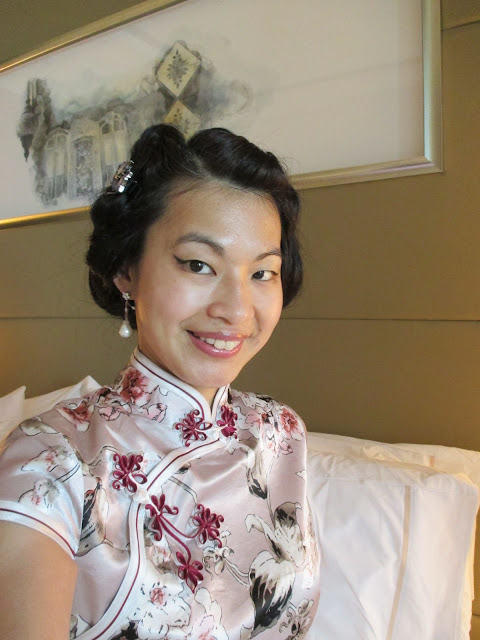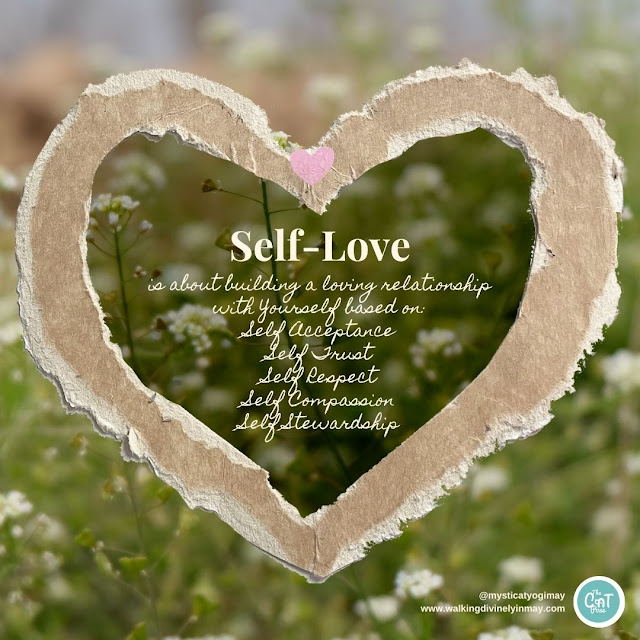Qipao Love: Part 25 ~ What to wear to a Chinese wedding tea ceremony?
 |
| Intricately beautiful flower knotted buttons....matched with pearl earring! |
 |
| Getting ready at the Westin, Singapore. |
Dress: Silk blush floral Cheongsam (purchased on holiday)
Earrings: Pearl flower drop from Toko Jewellery
Hair Accessories: Jewel hair clip from Asos and haircomb from Ebay
What to wear as guests at a Chinese wedding?
Today's modern brides have a choice of Western white bridal gown or traditional Chinese red dress, with many brides deciding to wear both at different intervals of their wedding and no longer fearing white as a traditional Chinese colour of mourning. Red being the official colour of blessings as well as celebration is worn openly during Chinese New Year, but usually a privilege reserved for the bride during weddings. In the old system that survived up to the early 1940s China, the normality of one wife and several concubines sharing one husband and living within the same gold gilded large household of the wealthy, dictated a difference of status as well as treatment of women. A wife had full legal status, entitlement to a full wedding and the right to have her name recorded in the family's official book or record of lineage as well as to be buried next to her husband when she dies, so concubines were of a lower status and were managed by the wife as part of the household. Therefore only a wife is bestowed the honour of wearing red on her elaborate wedding day, whilst concubines have to choose not fully red shades of pink and peach. So the colours for guests at a traditional Chinese wedding to avoid will likely be red and white, whilst the Qipao (Cheongsam) is widely accepted as beautifully formal and respected elegant attire for guests to wear to a Chinese wedding. In my sister's wedding I spotted quite a few glamorously beautiful Qipao, that were mostly tailor made, worn by guests that I found hard not to admire....and of course always try to have consideration for the bride's wedding theme or guest dress code.
 |
| Close up of the up-do I did.... |
The Chinese bridal Kwa
As modernity pushes life to more Western daily ways, brides with a Chinese heritage seem to be increasingly reverting back towards tradition in bring red or traditional wedding garments into their big day. Some brides will choose to wear a red Qipao dress, whilst others opt for the two piece red wedding suit called Kwa or Qun Kwa ( 裙褂 ) which is an ensemble of heavily embroidered silk jacket with mandarin collar matched with long ankle length skirt. Though the Kwa originates from southern Chinese brides who mainly speak Cantonese, it can actually be worn by all brides regardless of regional origin and is increasingly being chosen as a highlight of the Chinese wedding. The Kwa is usually hand embroidered with harmoniously auspicious motifs of the dragon (signifying the husband) and phoenix (representing the wife) through a concoction of golden or silver thread and delicate beading that can take anything from 3 months to 6 months to complete. A high quality Kwa with intricately designed embroidery can reach a high price tag, which is why many bridal stores in South East Asia provide a rental option...and there are even some that have been embroidered to create a stand-out 3D effect. [Find out more about the Kwa and how to choose your own from this article in Singapore Brides]
 |
| A Chinese bridal shop in Singapore.....the Kwa and Qipao stand next to each other. |
 |
| My sister wearing her beautiful Kwa and well suited new brother-in-law! |
 |
| The newly weds giving out lucky red packets to the younger generation who are yet to marry..... |
Chinese wedding tea ceremony
Many like my sister have chosen to wear the Kwa during the most culturally important part of their wedding, which is the family tea ceremony, where the couple is accepted into each family. This formal acceptance is also a phase where the new couple is bestowed with blessings from individual family members. As part of her dowry, the bride usually brings two auspiciously decorated tea sets with her into her new family, one set for herself and another for her groom which are used during the tea ceremony. The tea is usually a black tea with added red dates and crystal sugar or some sort of sweetener such as honey to signify a sweet and fruitful marriage ahead. The tea ceremony is conducted both on the groom as well as the bride's side, with the couple serving tea to elderly grandparents, parents, uncles or aunties to signify respect and are usually bestowed with words of well wishes as well as wedding gifts in the form of jewellery or money from their elders. After presenting tea to the older generation, the couple then acts on their new status of recognition in giving out lucky red envelopes (Ang Pow or Hung Pow with money) to family members who are not yet married (younger generation) as a sharing of blessings. The tradition of wedding tea ceremony is an important part that roots back to the underlying Chinese intention of marriage, which was originally seen as a joining of two families rather than just two people.
 |
| Three generations together on one floor......family! |
Marriage as a formal coming of age recognition and responsibility towards the next generation is celebrated in different ways within each culture, this is of course just one part of one culture and does not represent all....but the celebration of love is one that spans across all cultures! Next I shall be revealing the tailor made Qipao I wore for my sister's wedding banquette which is vintage inspired, so do stop back to see which decade it is. Hoping you have had a lovely weekend, and of course a very good week ahead!
Until the next time,
♥ May xx
♥ Follow ‘Walking in May’:
Love on Bloglovin
Plus on Google+
Like on Facebook
Tweet on Twitter
Pin on Pinterest
THANK YOU darlings! ♥





